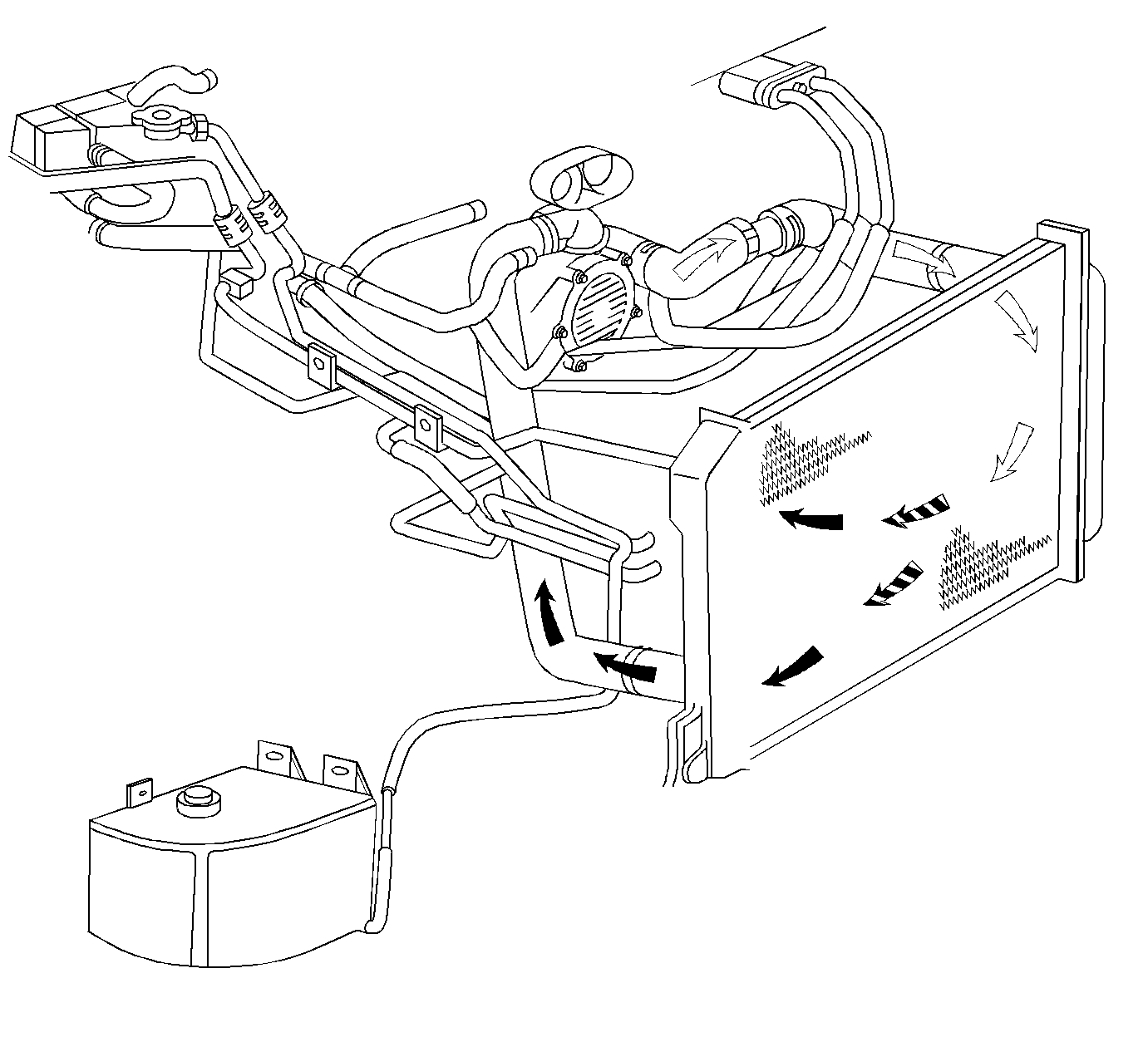Cooling System General Description
The cooling system maintains engine temperature at an efficient level
during all engine operating conditions. The thermostat remains closed until
the engine reaches proper operating temperature. When the engine is cold,
coolant does not circulate through the radiator in order to allow for faster
engine warm-up. When the engine reaches normal operating temperature, the
thermostat opens, and coolant circulates through the radiator in order to
keep the engine from overheating.

The cooling system consists of the following components:
| • | A coolant recovery reservoir |
| • | A thermostat and a housing |
| • | The water pump gear driveshaft |
| • | An air bleed venting circuit |
The water pump draws coolant from the radiator and the coolant circulates
through cooling jackets in the engine block, the cylinder heads, and the throttle
body and plenum. The coolant is then directed back to the radiator to be cooled.
The new reverse-flow cooling system draws coolant from the radiator
by the water pump and passes the coolant through the thermostat on the inlet
side of the pump.
The coolant is routed through the cylinder heads first. Vapor, if any,
is vented off through the air bleed pipe and the coolant travels down through
the bores and into the block. Once the coolant leaves the engine block, the
coolant returns to the water pump, where the coolant travels through
a cast internal passage to the radiator.
The system directs some coolant through hoses to the heater core in
order to provide for heating and defrosting. A sealed recovery reservoir connects
to the radiator surge tank in order to retrieve the coolant displaced by expansion.
As the coolant cools and contracts, vacuum draws the coolant back into the
radiator surge tank.
The radiator surge tank provides a coolant fill point and a central
cooling system air bleed location. A sensor in the radiator surge tank determines
the coolant level. When the coolant in the system falls below the recommended
level, a warning lamp in the instrument panel illuminates.
Engine Coolant
This vehicle has a newly developed engine coolant. GM Goodwrench DEX-COOL™
was developed to last for 166 000 km (100,000 mi) or
5 years, whichever occurs first. Follow the instructions in Draining/Filling
Cooling System. Make sure only GM Goodwrench DEX-COOL™ (orange-colored,
silicate-free) is used when coolant is added or changed.
A 50/50 mixture of ethylene glycol (GM Goodwrench DEX-COOL™) and
water will provide the following protection:
Notice: Pure coolant can be added to raise the boiling point of the coolant,
but too much will affect the freezing point. Do not use a solution stronger
than 70 percent, as the freeze level rises rapidly after this point.
Pure coolant will freeze at -22°C (-8°F).
| • | Give freezing protection down to -37°C (-34°F). |
| • | Give boiling protection up to 129°C (260°F). |
| • | Protect against rust and corrosion. |
| • | Help keep the proper engine temperature. |
| • | Let the warning lights and gauges work correctly. |
Engine Coolant Temperature (ECT) Sensor
The coolant temperature sensor is a variable resistance device. The
resistance of the gauge will determine the position of the coolant
gauge. As the coolant temperature increases, the sensor resistance decreases
allowing more current flow through the sensor. This causes a higher temperature
reading.

